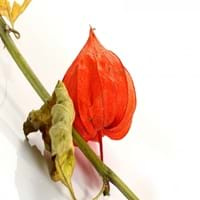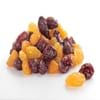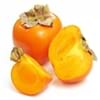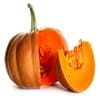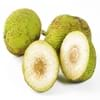Health Benefits
Anti-oxidant properties, Anti-inflammatory properties, Cancer prevention, Maintains healthy cholesterol level, Reduces blood circulation problems, Treatment of cough, fever & sore throat, Treatment of Hypertension
Cancer prevention, Heart care, Regulation of heart rate
General Benefits
Treatment of asthma, Treatment of cataract, Treatment of hepatitis, Treatment of macular degeneration, Treatment of neurodegenerative diseases
Anti oxidant properties, Anti-inflammatory properties, Boosts immune system, Controls blood pressure, Digestive aid, Strengthens bones
Skin Benefits
Treatment of Rheumatism & Dermatitis, Treatment of Skin Inflammation
Reduces wrinkles, Skin rejuvenation
Hair Benefits
Unknown
Promotes longer and healthier hair, Treatment of dandruff, Treatment of Lice
Allergy Symptoms
NA
Anaphylaxis, Itching, Skin rash, Swelling of face
Side Effects
Hypertension, Ventricular Tachycardia
Allergic reaction, Possibly unsafe during pregnancy
Best Time to Eat
As a snack in the late afternoon, Eat the fresh ones, avoid mixing with any other foods, don't eat after meal., Morning time (before lunch), Strictly avoid empty stomach
As a snack in the late afternoon, Don't consume at night and before bed, Morning time (before lunch)
Vitamin A (Retinol)
Not Available
Vitamin B5 (Pantothenic Acid)
Not Available
Vitamin B6 (Pyridoxin)
Not Available
Vitamin B9 (Folic acid)
Not Available
Vitamin C (Ascorbic Acid)
Lutein+Zeaxanthin
Not Available
Water Content
Not Available
Calories in Fresh Fruit with Peel
Not Available
Calories in Fresh Fruit without Peel
Not Available
Calories in Frozen Form
Not Available
Not Available
Calories in Dried Form
Not Available
Not Available
Calories in Canned Form
Not Available
Not Available
Calories in Juice
Not Available
Calories in Jam
Not Available
Calories in Pie
Not Available
Type
Fruit vegetable
Tropical
Season
Spring, Summer
Autumn, Spring, Winter
Varieties
Physalis franchetii, Physalis pruinosa, Physalis peruviana, Physalis heterophylla and Physalis philadelphica
Andrews, Amarilla, Asca, Baste, Bays, Bayott, Behl, Canaria, Capucha, Deliciosa, Ecuador, El Bumpo, Guayacuyán, Jete, Juniana, Knight, Nata, Popocay, Sander, Smoothey, Tumba, Umbonada, Whaley and White Juliana
Color
Bright Yellow, Orange
Green, Yellow
Inside Color
Orange
White
Origin
Chile, Peru
Ecuador
Climatic Conditions
NA
Warm
Facts about
NA
- Cherimoya is also called as custard apple or chirimoya.
- The word cherimoya came from the Quechua word,'chirimuya',which means 'cold seeds'.
- The cherimoya is called as 'the tree of ice cream'.
Other Countries
NA
Argentina, Chile, Colombia, Egypt, Italy, Mexico, Peru, South Africa, United States of America
Top Importer
Netherlands
United States of America
Top Exporter
Colombia
Spain
Botanical Name
Physalis Peruviana
Annona cherimola
Synonym
Alkekengi, Herschellia & Pentaphitrum
Not Available
Subkingdom
Tracheobionta
Tracheobionta
Division
Magnoliophyta
Magnoliophyta
Class
Magnoliopsida
Magnoliopsida
Subclass
Asteridae
Magnollidae
Order
Solanales
Magnoliales
Family
Solanaceae
Annonaceae
Species
Physalis
A. cherimola
Generic Group
Not Available
Not Available
Difference Between Physalis and Cherimoya
We might think that Physalis and Cherimoya are similar with respect to nutritional value and health benefits. But the nutrient content of both fruits is different. Physalis and Cherimoya Facts such as their taste, shape, color, and size are also distinct. The difference between Physalis and Cherimoya is explained here.
The amount of calories in 100 gm of fresh Physalis and Cherimoya with peel is 77.00 kcal and Not Available and the amount of calories without peel is Not Available and 75.00 kcal respectively. Thus, Physalis and Cherimoya belong to High Calorie Fruits and Low Calorie Fruits category.These fruits might or might not differ with respect to their scientific classification. The order of Physalis and Cherimoya is Solanales and Magnoliales respectively. Physalis belongs to Solanaceae family and Cherimoya belongs to Annonaceae family. Physalis belongs to Physalis genus of Physalis species and Cherimoya belongs to Annona genus of A. cherimola species. Beings plants, both fruits belong to Plantae Kingdom.
